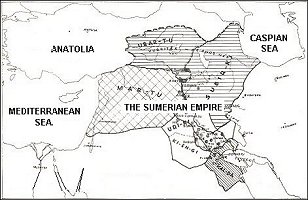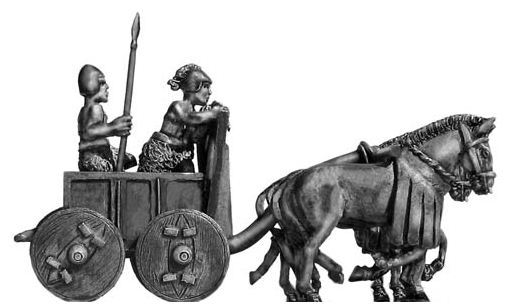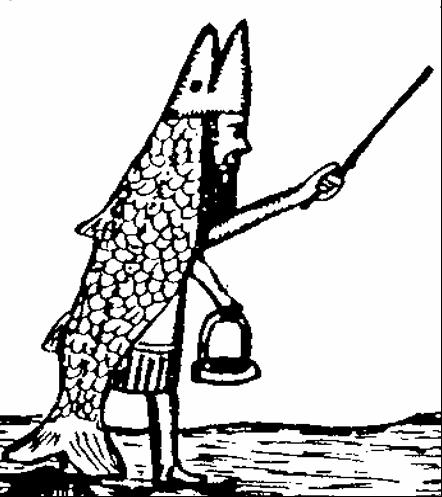|
|
HOME
- TABLE OF CONTENTS
- WAR ROOM -
THE GOSPEL
- BIBLE
STUDY - MORAL
ISSUES - KING
JAMES BIBLE - CULTS |
THE SUMERIAN ANOMALYI have been reluctant to open this thing to my readers. It seems to be genuine, but it also has a very dark side to it. One is forced to investigate some strange things, and since this was thrust upon me without my desire for it, I believe I must see it through. I have felt compelled to inform you all of my findings, and I am determined to learn if this is a hoax or something from the distant past that may have a special meaning for us all.
The Sumerian Empire was possibly the longest lasting in human history dating from 4100 BC to about 2000 BC. They were eventually contemporaries of the Assyrians and the Babylonians, though in those end years they fell behind the empires around them and faded. The final collapse of the Sumerian Empire was explained in cuneiform inscriptions as the result of not having enough gods. This was their own explanation, so it has remained a very strange explanation for many years. Empires usually collapse from within by corruption and social decay. How did the Sumerians survive for so many years though? The answer seems to be in their strategy for dealing with their neighbors and how they made war.
The Sumerians may have invented the Armored Personnel Carrier also. They had four wheel chariots that carried fifteen of twenty soldiers which would drive ahead of the mass of soldiers.
So, the enemy almost always capitulated at once hoping for mercy, and they got it. The Sumerians would not kill anyone, but they demanded the god of the vanquished kingdom be handed over. After this, they let the people go home and pay a token tribute from then on. The Sumerians then took the god of the vanquished back to their capital, Nippor, and installed him in the temple in the highest place of honor for a year or so. This gave the conquered nation a great distinction, and while the nations did not actually line up to be conquered in order to see their god in charge for a year, they did capitulate very easily in many cases. Now, these aspects of Sumerian conquest and governance lead us to the end of my research, but I need to give you more information to get the whole context. Dr. Rafik Kouri, Director of Antiquities of the Institute of Antiquities in Upper Slobovia, in south Russia, had come to my attention from folio entries he had in the University of Michigan at Ann Arbor Library. He is a leading authority in Sumerian history and religious heritage. I found an address for him, and I wrote him asking what he knew about the Sumerian pattern of conquest-- what I have called "the Sumerian Anomaly." He wrote back after some time and explained that he was at the Bosra dig just north of the head of the Persian Gulf looking for the very things I had asked about. He said he had been seconded from the U. of M. to the Museum of Anthropology and Ethnography of the Peoples of the World in St. Petersburg, Russia. He was to supervise two digs, one at Basra, and one at Bahrain, which you may know is the present name of the ancient empire of Dilmun. The directors of the Russian museum are very eager to make connections between the god and myth heritage of Sumer, Dilmun, and the Indus Valley which we know as India. Dr. Kouri promised to keep my interest in mind as he worked the digs, and he mentioned that he too was very eager to get to the bottom of the question of the Sumerian god collection. It seems no archaeologist has ever found what we might call today a "Systematic Theology" for the Sumeian god pantheon.
Finally, Dr. Kouri sent back the information:I recently received a report from Dr. Kouri which was amazing, and this report resulted in this article for my readers. Not only had Dr. Kouri remembered my interest in the Sumerian issues, he said that my suspicion that there was a missing key, a "Sumerian Anomaly" to the Sumerian pantheon was well founded. He had found exceptional results in both the digs at Bahrain and at Basra which opened up a whole new area of discovery in the Middle Eastern god system. Dr. Kouri combined his knowledge of the Middle East and Sumerian history with the inscription he found on the cuneiform tablet to put together the following account:
The Key to the Sumerian AnomalyDr. Kouri tells me that the inscription on the cuneiform tablet at the entrance of the ziggurat was actually in the Kassite dialect. This was a mysterious tribe of Aryan people who came into Sumer from the north in about 3700 BC and ruled for about two hundred years at the head of the Persian Gulf. They were intruders in that they came into the Sumerian era midway, took charge and ruled with what sounds like Anglo-Saxon brutality, and then disappeared back to the north. No one has ever determined for sure who they were. They adopted the cuneiform script while they were in Sumer, but they used it phonetically to write the sounds of their own Kassite language. After the Kassites later disappeared to the north, this left the Sumerians hundreds of thousands of cuneiform tablets that could not be deciphered due to language differences. Thus, the tablet posted outside the ziggurat entrance. Dr. Kouri happens to be an expert in Kassite cuneiform reading, and he was able to quite easily tell me the whole message on the tablet at the entrance of the ziggurat. It reads as follows:
Dr. Kouri did some calculations from calendars of history, and he found that the days that would transpire, would end on December 21, 2014, and he wonders if the kingdom to the west that was said to end was the United States. This seems to be nothing but a coincidence and of no serious concern. There was one last warning with cuneiform astonishers before it and after it on the tablet on the ziggurat, which read,
Well, now you know the end of the "Sumerian Anomaly." We must all so live that, at the end of the day, we will know that we have read all the signs and stayed clear of smoking ziggurats. You may quote me on that one if you give credits. I want to thank Dr. Rafik Kouri of the Institute of Antiquities in Upper Slobovia for his kind and thorough investigation of the Sumerian Anomaly. If you enjoyed this insane moment in my editorial career at your expense, keep checking back. I intend to have us all in a state of ubiquitous consternation, and other nasty circumstances, just as soon as I get more time to stretch the blanket.
BACK TO THE WAR ROOM-- General Wickedness
ge |

 The
Sumerians were not exactly cowards, but they had invented a strategy to conquer
their neighbors that usually did not require war. They would at first arrive at
the scene of a showdown looking like they intended to start a massive battle.
They would order their soldiers to come over a rise in the desert all at the same
time. The army was strung out in one long line across the horizon, and they flashed
polished brass shields reflecting the sun to blind the enemy. There was no second
rank behind this line of soldiers, so the Sumerian army looked numberless, stretching
from one horizon to the other. Remember, there was no air reconnaissance in those
days, so this worked.
The
Sumerians were not exactly cowards, but they had invented a strategy to conquer
their neighbors that usually did not require war. They would at first arrive at
the scene of a showdown looking like they intended to start a massive battle.
They would order their soldiers to come over a rise in the desert all at the same
time. The army was strung out in one long line across the horizon, and they flashed
polished brass shields reflecting the sun to blind the enemy. There was no second
rank behind this line of soldiers, so the Sumerian army looked numberless, stretching
from one horizon to the other. Remember, there was no air reconnaissance in those
days, so this worked. 
 Also,
the Dilmunian priests tried to read it, but all they could determine was that
the god was said to be the high god of the Sturgeon Dynasty. This had been Kassite
dynasty of kings in about 3700 BC who fashioned themselves as the sturgeon, a
huge fish found in the waters of the area. Dr. Kouri is convinced this is where
the fish hat comes from in so many pottery and bas relief samples from the Sumerian
and Dilmunian era. This fish hat has come down to our day, it seems, in the Egyptian
priest craft, and it is curious that the Pope of the Roman Catholic Church wears
such a head piece.
Also,
the Dilmunian priests tried to read it, but all they could determine was that
the god was said to be the high god of the Sturgeon Dynasty. This had been Kassite
dynasty of kings in about 3700 BC who fashioned themselves as the sturgeon, a
huge fish found in the waters of the area. Dr. Kouri is convinced this is where
the fish hat comes from in so many pottery and bas relief samples from the Sumerian
and Dilmunian era. This fish hat has come down to our day, it seems, in the Egyptian
priest craft, and it is curious that the Pope of the Roman Catholic Church wears
such a head piece.